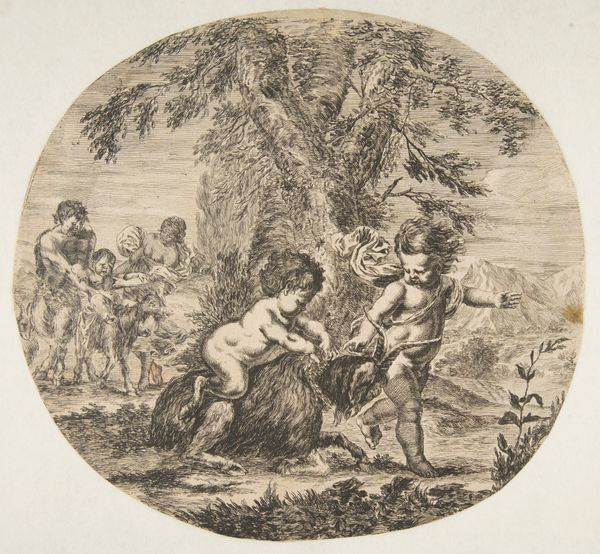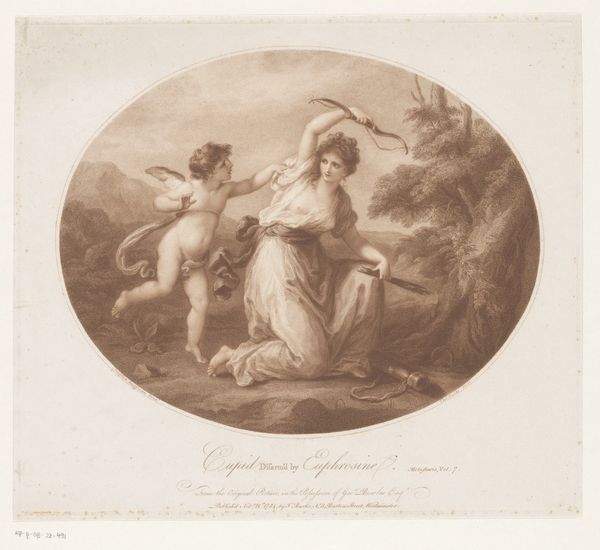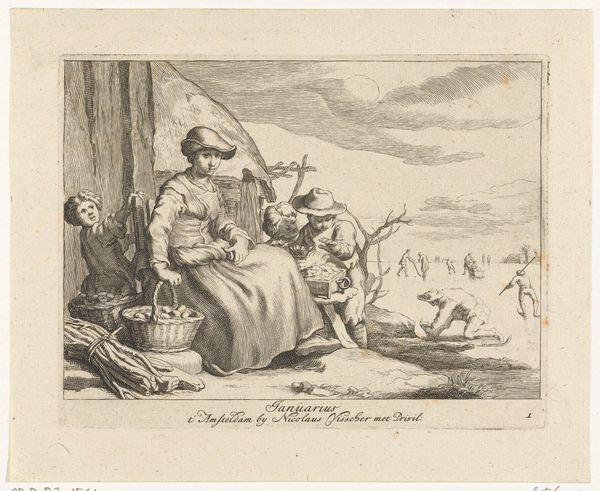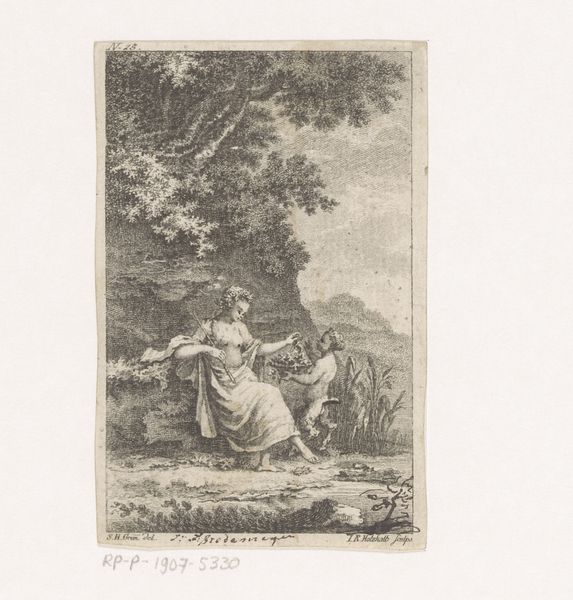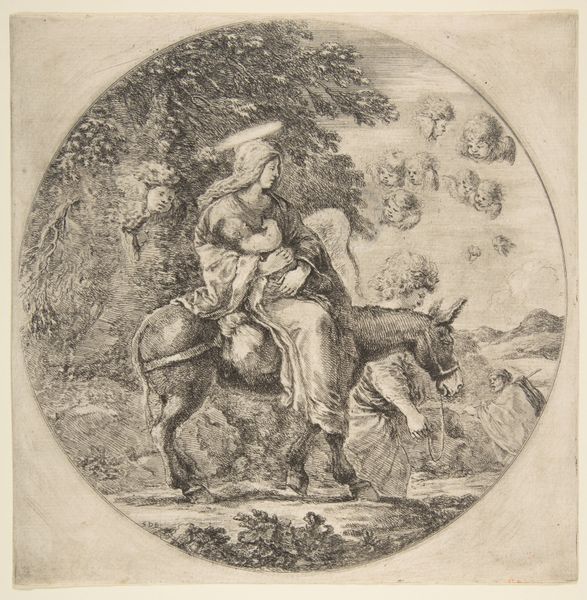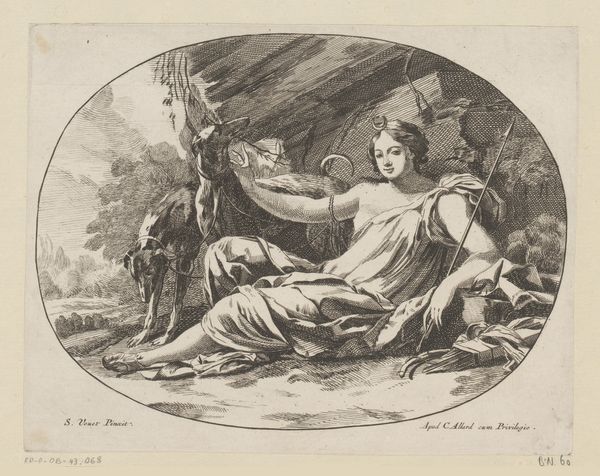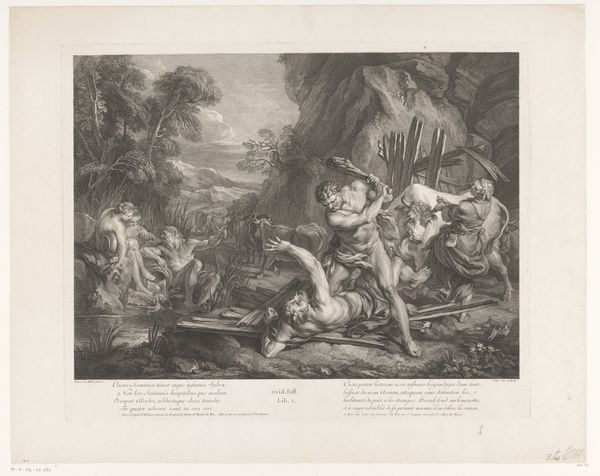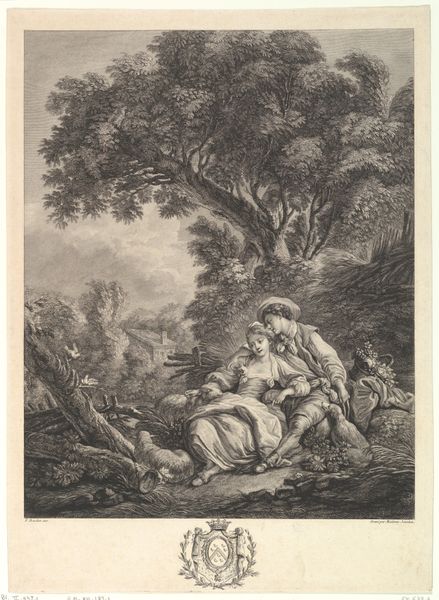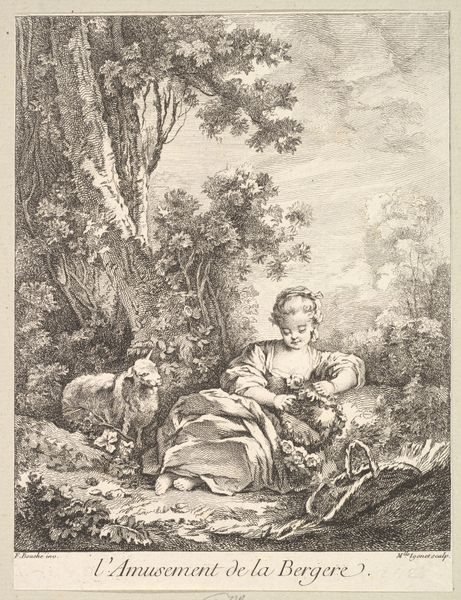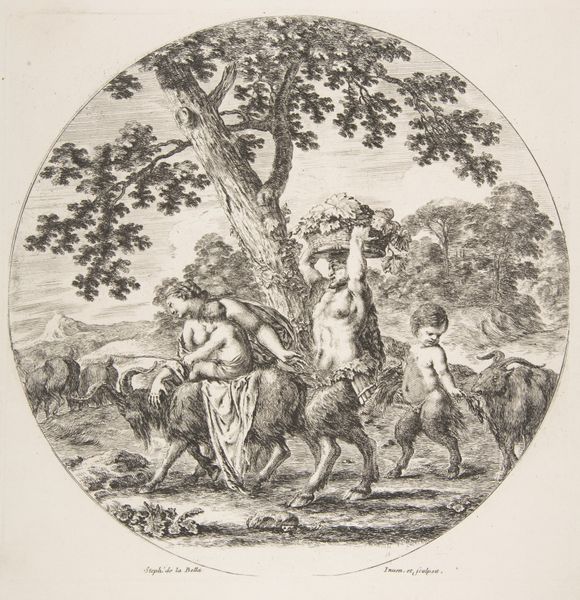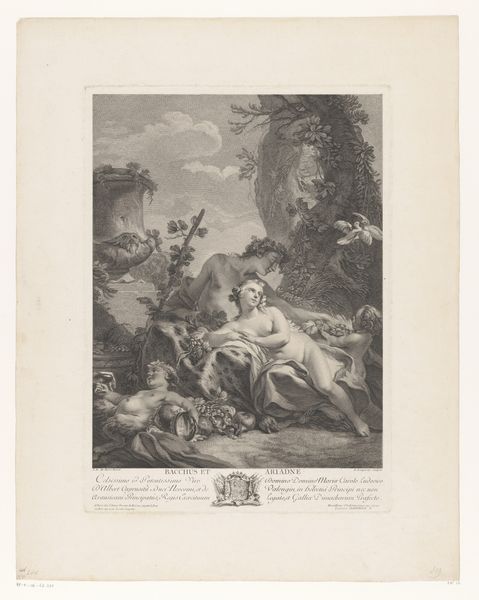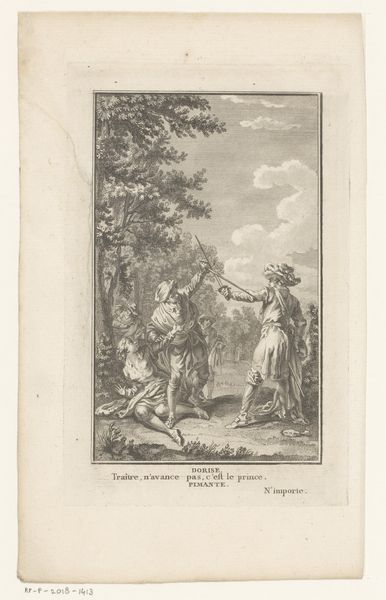
Dimensions: height 138 mm, width 170 mm
Copyright: Rijks Museum: Open Domain
Editor: Here we have M. Brakel's "Kinderen voeren eenden," or "Children Feeding Ducks," an engraving from around 1790 to 1802. It’s quite charming! What stands out to me is the circular composition and the overall sense of innocence. What do you see in this piece? Curator: The scene initially appears as a simple depiction of childhood innocence. However, considering its historical context, we can delve deeper. Genre scenes like this were popular amongst the burgeoning middle class and represent evolving attitudes towards childhood in the late 18th century. It embodies Enlightenment ideals on education and naturalism; that childhood requires protecting, and its naivety must be nurtured. Does it feel saccharine at all to you? Editor: I suppose so, especially given what we now know about inequality and class divisions. The children are well-dressed, suggesting a certain level of privilege, whilst there's no hint of labor in the image at all. Curator: Precisely! Consider also, the period; just before and during the French Revolution. While championing concepts of equality and fraternity, images like these, with their inherent class assumptions, perpetuated the existing social hierarchy. It highlights an idealised childhood inaccessible to many. How might the presence of the dog play into that narrative? Editor: A signifier of wealth, perhaps? Or of their dominion over the natural world? Curator: Both valid points! Animals often serve as symbols, reinforcing the domesticity and control associated with bourgeois life. These children are quite literally feeding the wildlife in order to manage the local population. The idyllic landscape acts to normalise the existing societal structures, masking underlying socio-economic realities. Editor: That gives me a lot to consider. Thanks! It's not just a pretty picture, but a snapshot of evolving societal values, privileges and class dynamics. Curator: Absolutely! By examining art through a contemporary lens, we uncover the complex interplay between aesthetics and social commentary. It allows us to challenge conventional readings and deepen our understanding of art’s role in shaping cultural narratives.
Comments
No comments
Be the first to comment and join the conversation on the ultimate creative platform.
